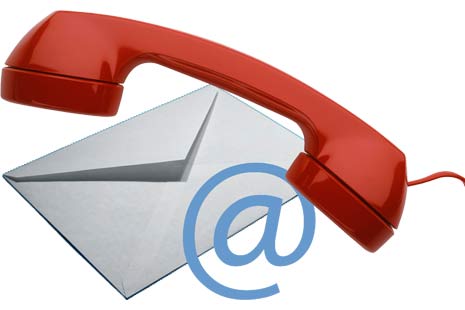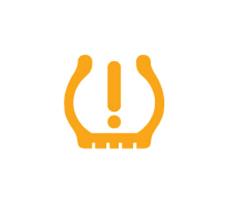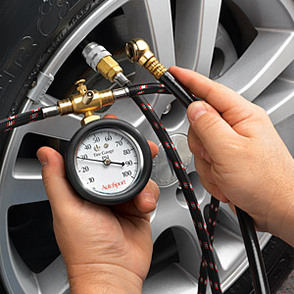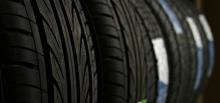233 NE Grand Ave, Portland, OR 97232 | call: (503) 517-0871
BUSINESS HOURS| Monday-Friday 9AM-6PM PST | Saturday 9AM-5PM PST | Sunday CLOSED
WE'VE GOT THE BEST PRICES. PERIOD.
Check out our Products

Tire pressure is a measure of the amount of air in a vehicle's tires, in pounds per square inch. The required service involves checking the tires' pressure with a pressure gauge, at least monthly, if not more frequently.
Should I do this service when it's recommended?
 Yes. Absolutely.
Yes. Absolutely.
Why do I have to do this?
 Having the proper tire pressure is a crucial safety issue. Next to the brakes, the tires are the most important safety devices on your car. Incorrect tire pressure will compromise cornering, braking and stability. And in the worst-case scenario, improper tire pressure can lead to tire failure — and a serious accident. Incorrect tire pressure also will affect your comfort, fuel economy and tire life.
Having the proper tire pressure is a crucial safety issue. Next to the brakes, the tires are the most important safety devices on your car. Incorrect tire pressure will compromise cornering, braking and stability. And in the worst-case scenario, improper tire pressure can lead to tire failure — and a serious accident. Incorrect tire pressure also will affect your comfort, fuel economy and tire life.
What happens if I don't do this?
 If tire pressure is too high, then less of the tire touches the ground. As a consequence, your car will bounce around on the road. And when your tires are bouncing instead of firmly planted on the road, traction suffers and so do your stopping distances. You'll also feel a decrease in ride comfort. (Hint: If you notice that every tie you own has coffee on it, check your tire pressure. It may be too high.)
If tire pressure is too high, then less of the tire touches the ground. As a consequence, your car will bounce around on the road. And when your tires are bouncing instead of firmly planted on the road, traction suffers and so do your stopping distances. You'll also feel a decrease in ride comfort. (Hint: If you notice that every tie you own has coffee on it, check your tire pressure. It may be too high.)
 Most vehicles list tire pressure requirements on one of the door posts, most often the driver's.
Most vehicles list tire pressure requirements on one of the door posts, most often the driver's.
 If tire pressure is too low, then too much of the tire's surface area touches the ground, which increases friction between the road and the tire. As a result, not only will your tires wear prematurely, but they also could overheat. Overheating can lead to tread separation — and a nasty accident. One sign of low tire pressure is if your tires squeal when cornering.
If tire pressure is too low, then too much of the tire's surface area touches the ground, which increases friction between the road and the tire. As a result, not only will your tires wear prematurely, but they also could overheat. Overheating can lead to tread separation — and a nasty accident. One sign of low tire pressure is if your tires squeal when cornering.
 And you need to check your tire pressure even if your tires aren't leaking. Why? Because tire pressure also changes with the temperature outside. Tire pressure decreases by about 1 pound per square inch for every 10-degree drop in outside air temperature. So if you last had your tire pressure checked in July, when it was 80 degrees outside, and it's now January — and the temperature is minus 20 — your tires may be underinflated by 10 pounds, which is dangerous.
And you need to check your tire pressure even if your tires aren't leaking. Why? Because tire pressure also changes with the temperature outside. Tire pressure decreases by about 1 pound per square inch for every 10-degree drop in outside air temperature. So if you last had your tire pressure checked in July, when it was 80 degrees outside, and it's now January — and the temperature is minus 20 — your tires may be underinflated by 10 pounds, which is dangerous.
How do you determine the correct tire pressure for your car's tires?
 If the specs aren't on any door post, check inside the glove compartment (pictured), under the center console cover or in the owner's manual.
If the specs aren't on any door post, check inside the glove compartment (pictured), under the center console cover or in the owner's manual.
 A lot of people check the pressure listed on the tires themselves, but that's actually the wrong place to look. The number on the tire is the maximum allowable air pressure — not the recommended pressure for that tire when used on your vehicle.
A lot of people check the pressure listed on the tires themselves, but that's actually the wrong place to look. The number on the tire is the maximum allowable air pressure — not the recommended pressure for that tire when used on your vehicle.
 The recommended tire pressure is almost always lower than the maximum tire pressure. Check your owner's manual to find out where to look on your vehicle to find the recommended measurement. This number usually is indicated either on the driver's door pillar, the glove compartment door or sometimes on the gas filler door.
The recommended tire pressure is almost always lower than the maximum tire pressure. Check your owner's manual to find out where to look on your vehicle to find the recommended measurement. This number usually is indicated either on the driver's door pillar, the glove compartment door or sometimes on the gas filler door.
 Once you know the manufacturer's recommended tire pressure, then you need an accurate tire gauge to check the tire pressure. Some tire gauges, such as the popular pencil-style gauge, are notoriously inaccurate. Analog, dial-type gauges or digital gauges tend to be fairly accurate.
Once you know the manufacturer's recommended tire pressure, then you need an accurate tire gauge to check the tire pressure. Some tire gauges, such as the popular pencil-style gauge, are notoriously inaccurate. Analog, dial-type gauges or digital gauges tend to be fairly accurate.
 And when should you check the tire pressure? You should check it when the tire is cold. That doesn't mean you need to move to International Falls, Minn., to check your tire pressure. Cold, in this sense, simply means that your tires are at air temperature. You can check tire pressure any time of the day, as long as the tires have been sitting for a few hours or haven't been driven for more than a few miles. In other words, you can drive to the gas station a few blocks away and ask them to check the pressure, but don't expect to pull off the highway after driving for an hour and expect to get an accurate reading.
And when should you check the tire pressure? You should check it when the tire is cold. That doesn't mean you need to move to International Falls, Minn., to check your tire pressure. Cold, in this sense, simply means that your tires are at air temperature. You can check tire pressure any time of the day, as long as the tires have been sitting for a few hours or haven't been driven for more than a few miles. In other words, you can drive to the gas station a few blocks away and ask them to check the pressure, but don't expect to pull off the highway after driving for an hour and expect to get an accurate reading.
 When you do check your tire pressure, remember to check all four tires. Just because three of your tires are at 30 pounds doesn't mean that the fourth tire isn't nearly flat. Finally, check the spare tire at least once in a while — it would be an unpleasant surprise to find it flat when you need it. If you have a small, space-saver spare, then the pressure for that tire is probably not the same pressure as your regular tires. The correct tire pressure should be printed right on this particular type of spare.
When you do check your tire pressure, remember to check all four tires. Just because three of your tires are at 30 pounds doesn't mean that the fourth tire isn't nearly flat. Finally, check the spare tire at least once in a while — it would be an unpleasant surprise to find it flat when you need it. If you have a small, space-saver spare, then the pressure for that tire is probably not the same pressure as your regular tires. The correct tire pressure should be printed right on this particular type of spare.
Is there any maintenance required between intervals?
 Yes. If you have no known problems with your tires, check your vehicle's tire pressure seasonally or before you head off on a road trip. When you bring your car in for service, ask them to check the tire pressure; most garages will do this at no additional cost. Plus, they'll usually have an accurate gauge — which will also give you an idea of whether your gauge is correct. ... Read less <<
Yes. If you have no known problems with your tires, check your vehicle's tire pressure seasonally or before you head off on a road trip. When you bring your car in for service, ask them to check the tire pressure; most garages will do this at no additional cost. Plus, they'll usually have an accurate gauge — which will also give you an idea of whether your gauge is correct. ... Read less <<






